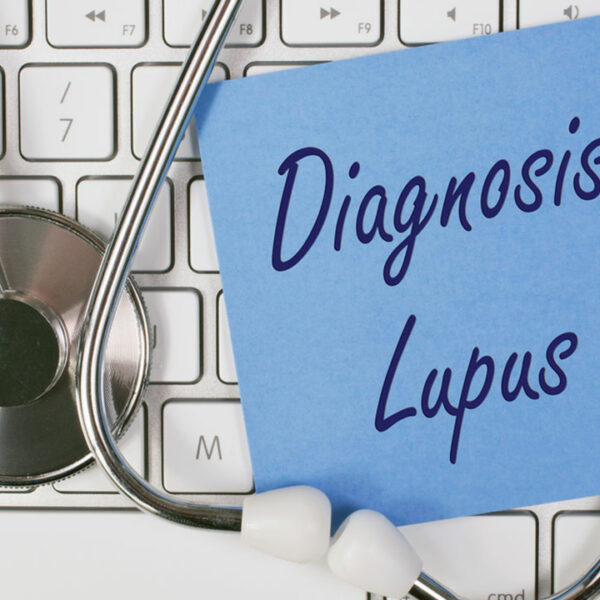First Symptoms of Lupus to Watch Out For
Lupus is a complicated and often debilitating condition. Catching the first symptoms of lupus early is important for initiating treatment of this condition. Lupus is a collection of autoimmune disorders, rather than one single disease. In an autoimmune disorder, the body’s immune system attacks the body itself. Lupus is a chronic condition, and the most severe and most common form of lupus is Systemic Lupus Erythematosus.
The first symptoms of lupus can manifest in a variety of ways.

These vague first symptoms of lupus also make it hard to diagnose the condition accurately, since it can mimic a number of other diseases and conditions. The first symptoms of lupus manifest in early adulthood or the late teens, but some late-onset cases develop in the 30s. More instances of lupus occur in women than men.
People with lupus experience flare-ups of the condition, followed by periods of remission that can last for months, or even years, followed by more flare-ups. This can make it easy to overlook the first symptoms of lupus.
First Symptoms Of Lupus
The first symptoms of lupus can manifest in many ways depending on the part of the body that is affected. These are a few of the more generalized first symptoms of lupus:
- Fever
- Joint pain
- Fatigue
- General discomfort
- Hair loss
- Swollen lymph nodes
- Sensitivity to sunlight
Other Symptoms of Lupus
- Butterfly rash
The butterfly rash is the most common indicator of lupus and is quite specific to this condition. However, in a few rare cases, the rash may not develop at all. The rash is red and bumpy and extends from the bridge of the nose across the cheeks, which gives it the appearance of butterfly wings. The rash almost always occurs only on the face but can manifest elsewhere on the body like the chest. This rash worsens when exposed to sunlight.
- Mouth or nose ulcers
Some people may develop painful ulcers on the tissue of the oral or nasal cavity. One possible cause of mouth ulcers is that lupus decreases saliva production, leading to dry mouth and mouth ulcers.
- Hair loss or thinning hair
Hair thinning is often one of the first symptoms of lupus that people notice. The thinning or hair loss may be uniform, or in patches. The scalp may also become dry and scaly. The hair becomes dry, brittle, and takes on a ragged appearance. Some people also start to lose hair on other parts of their body including the eyebrows, eyelashes, and other body hair.
- Fatigue
Fatigue is a rather vague symptom that can be caused by a number of reasons, but it is still one of the most important first symptoms of lupus. Since lupus causes inflammation in almost the entire body, this leads to a lot of physical and emotional stress. About 90% of people afflicted with lupus experience some level of fatigue. In some cases, this fatigue can be crippling, but it’s important to try to maintain some level of activity.
- Frequent infections
Since lupus is an autoimmune condition, the immune system is compromised, which leaves patients at risk of catching an infection. This lowered immunity means that one of the first symptoms of lupus is an abnormally frequent and recurrent proneness to infections.
- Joint pain or stiffness
Joint stiffness and pain, especially in the morning, often start months or years before any other symptoms manifest. This makes it an important first symptom of lupus to watch out for. Joint problems are often widespread, with a number of joints throughout the body being affected.
95% of people with lupus develop symptoms akin to arthritis in their joints.
- Sensitivity of the extremities
The tips of the fingers and toes may turn blue during periods of stress or when exposed to cold. This is known as Raynaud’s disease. There may also be generalized sensitivity, and pain in the fingers and toes.
- Chest pain
Lupus can affect the lungs and cause inflammation in the lungs, the blood vessels in the lungs, and the diaphragm. This causes a painful or a burning sensation when breathing, which is another early indicator of lupus.
- Kidney inflammation
Kidney inflammation is one of the more serious symptoms of lupus. It can cause low blood pressure, swelling in the legs, darker urine, blood in urine, and other complications. Lupus is relatively rare but if you have a family member with lupus, or if you’re particularly susceptible, you should watch out for the first symptoms of lupus. There is no cure for lupus but the condition can be managed with medication and support. It is important to see a doctor and start treatment as soon as the first symptoms of lupus start to appear. This will help reduce the severity of the condition.





